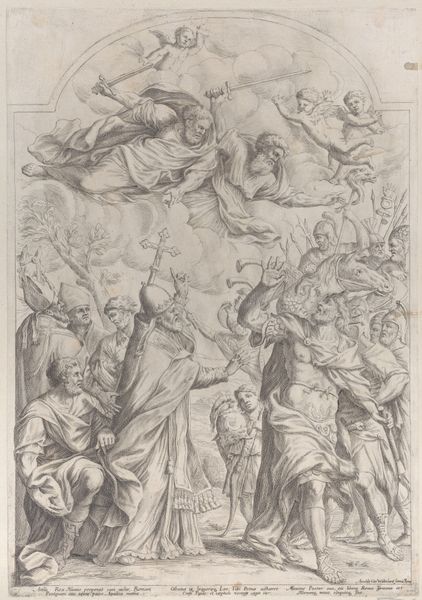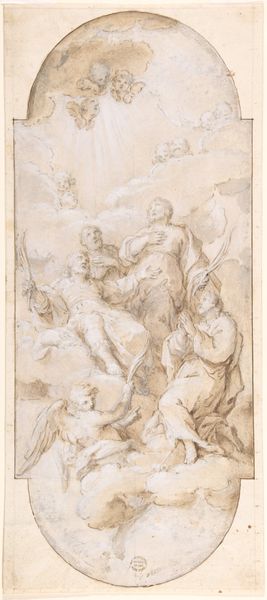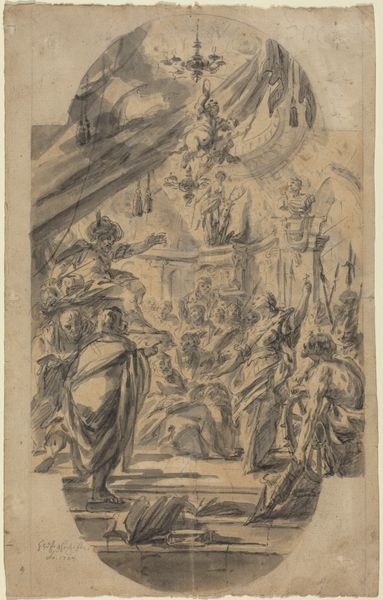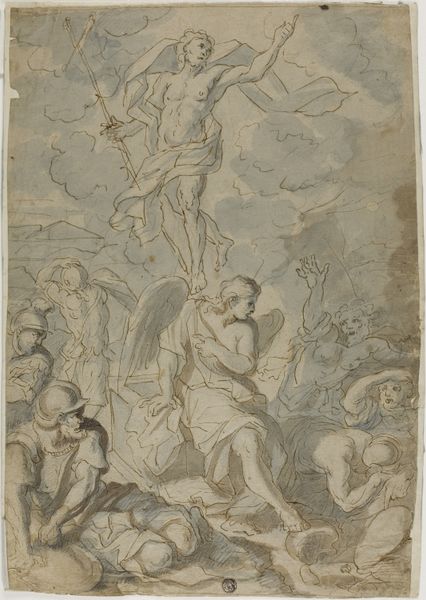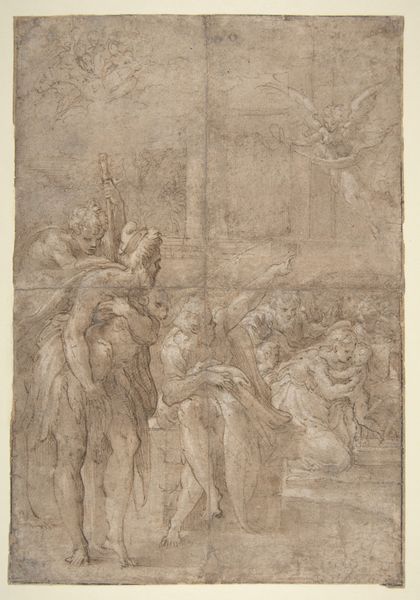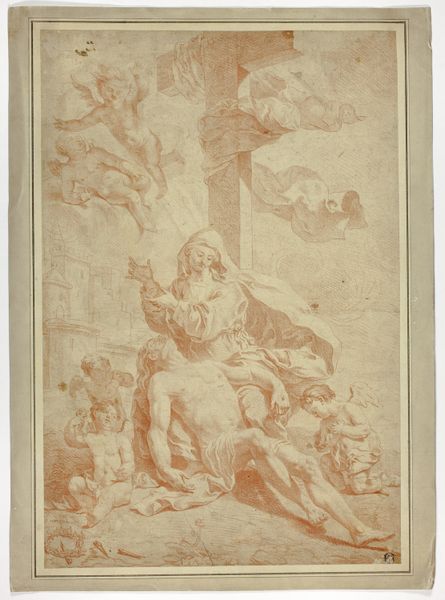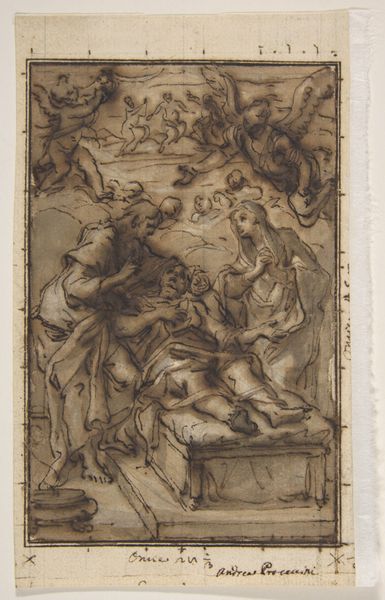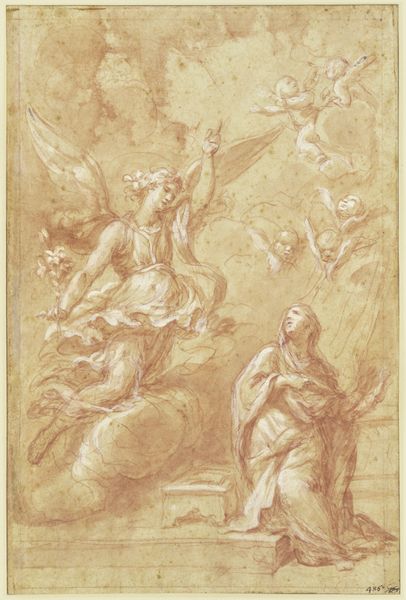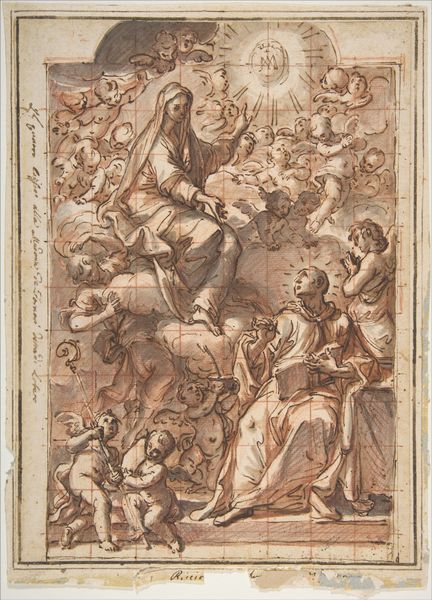
Rome and the Tiber Paying Homage to a Pope (Clement XI ?) 1625 - 1713
0:00
0:00
drawing, coloured-pencil, print
#
drawing
#
toned paper
#
coloured-pencil
#
baroque
# print
#
circle
#
coloured pencil
#
underpainting
#
men
#
history-painting
#
angel
Dimensions: 9 3/16 x 6 5/16in. (23.4 x 16cm)
Copyright: Public Domain
Curator: Looking at this, it feels like a sepia dream. Brown washes bleeding into the paper, giving a sense of weightiness but also ethereality. I get the feeling that someone's trying to catch time slipping away through allegorical figures. Editor: That’s an interesting reading! Well, what we are observing is a drawing attributed to Carlo Maratti, a prominent artist working roughly between 1625 and 1713, known as “Rome and the Tiber Paying Homage to a Pope (Clement XI ?)”. It employs colored pencil and wash on toned paper and it currently resides at the Met. Curator: Ah, so history in amber, then. Tell me more about the power dynamics depicted in the composition—the posture, the figures… what’s being presented, negotiated, questioned? Editor: In the piece, the city of Rome, personified by a helmeted female figure, kneels in deference before an oval portrait of a Pope—likely Clement XI. Angels with instruments flank the portrait, set against a backdrop of architectural sketches. Below, the river god Tiber reclines, seemingly in watchful contemplation. Curator: So the Pope is, ostensibly, on high. But notice how grounded Tiber is, literally rooted to the earth? Is it an appeal to the earth, or does the earth pay tribute here? He grounds the piece, even under the airy cherubs and idealized architecture. Editor: Precisely, the river god brings stability while framing it within Rome's sociopolitical context. I suspect it highlights the perceived legitimacy of papal power but this is subtly filtered through the city's own established symbols, Rome's classical and civic heritage through the figure of Rome. Curator: Heritage, yes, and the weight of time bearing down on it, literally. You see how the washes blur details—it reminds you of frescoes worn by the elements—what has Rome retained and what's vanished or blurred, through history and in the popular conscience? And who gets to decide the answers? Is it those on high? Editor: These drawings offer a window into baroque Rome’s self-perception as an institution. As you imply, Carlo Maratti uses established visual tropes to express messages that simultaneously validate authority and raise nuanced questions about civic and pontifical relationships, that are shaped in this specific historic time. Curator: Indeed! A reminder that even in the most elaborate praise, shadows linger, asking the important questions about power and identity. Editor: Yes, that’s a great perspective. Thank you for shedding a more imaginative light onto Carlo Maratti's depiction here.
Comments
No comments
Be the first to comment and join the conversation on the ultimate creative platform.


